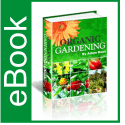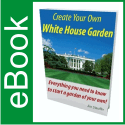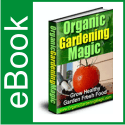Raised Bed Gardening Considerations
Raised Bed Gardening Considerations
Article by Ellen Bell
Raised bed gardens, or gardens that are planted in elevated or terraced areas, are very popular in many parts of the world, and have been a tried and true gardening method for centuries. Raised bed gardening systems solve problems like poor soil conditions, bad drainage, and a host of other issues that can make planting difficult. Because much of the world is not blessed with perfect, fertile soil, raised bed gardens are constructed out of necessity.
If you are preparing to construct a garden, and you think that raised beds might meet your needs, there are a number of considerations to take into account before you begin digging. In this article, we’ll explore some of the aspects of raised bed gardening that may play a role in your decision about whether this ancient gardening method is right for you.
Raised beds can be constructed of almost any strong type of material that is readily available in your area. In other parts of the world, raised bed gardens are reinforced with rocks, wood, bamboo, and other materials that are indigenous to various regions. If you decide to use wood, be sure to choose a wood that is not chemically treated, as those chemicals can leak out into the soil over time, poisoning and killing your plants.
Raised beds are ideal in hilly areas. If your planned garden site is on a slope, consider terracing into the hill to form planting areas that are flat on top. Furthermore, raised beds are an excellent solution if your garden is in a low spot or an area that does not drain well. During the construction of the raised bed, you can inlay tile to exit at the lowest point. Midwestern farmers learned generations ago that laying drainage tile in flat fields improves productivity because the soil drains better. Regardless of your elevation, in some raised bed applications, you may need to line the inside of the bed with a sheet of black plastic to prevent the plants from rooting too deeply. In these situations, laying drainage tile is also very important.
Soil type can also influence your decision to construct raised bed gardens. If you live in an area with poor soil, raised beds give gardeners an opportunity to grow plants that otherwise would not thrive in their local soil conditions. Once a raised bed is constructed, you can fill it with whatever soil type you think will be most beneficial to the plants you’ll be growing there. If your plants require a more acidic or alkaline soil, you can also make those adjustments from one elevated area to another.
Climate may be another important consideration. Raised beds do tend to dry out more quickly, and thus will require more frequent watering. However, with raised beds, you can also place your irrigation system in a strategic location to reduce the volume of water needed. If you are in a very rainy climate, the improved drainage provided by raised bed gardens will promote higher productivity and better opportunity for tending of the garden.
There are health benefits to raised bed gardens, too. Because you don’t have to bend and stoop all the way over to the ground, you’ll be putting much less stress and fatigue on your back and joints. Raised beds are also an excellent gardening solution for physically impaired individuals. The height of the raised beds can be designed to correspond to the height of a wheelchair. If you are building with handicap access in mind, be sure to allow enough distance between the raised beds so that a wheelchair can fit through. You also need to insure each elevated section is narrow enough so that the individual can reach all the way into the center of the bed, as necessary. Handicap accessible raised bed gardens can also benefit from brick or stone pathways, which are easier to navigate in a wheelchair.
Lastly, if you have problems with garden pests, such as squirrels, rabbits or deer, raised bed gardens may be a good gardening solution because they can be more difficult for these animals to access. Raised bed gardens can also be easily penned in with netting or fencing to keep unwanted animals out.
Constructing raised bed gardens is no small job. Before beginning, it’s important to take all considerations into account to be sure that this method of gardening is right for you. For many gardeners, raised beds are ideal. For some gardeners who already have good soil and drainage conditions, they are unnecessary. Either way, with a little research and forethought, you’ll make the decision that is best for you and your plants. And if you do decide to construct raised bed gardens in your yard, you will likely enjoy years of gardening success from your efforts.
About the Author
Ellen Bell works for Home Products ‘n’ More, a retail website offering free shipping on all raised gardening bed kits and garden edger kits! Visit us at http://www.homeproductsnmore.com/Landscape_Edging_s/140.htm

 September 21, 2011
September 21, 2011 







